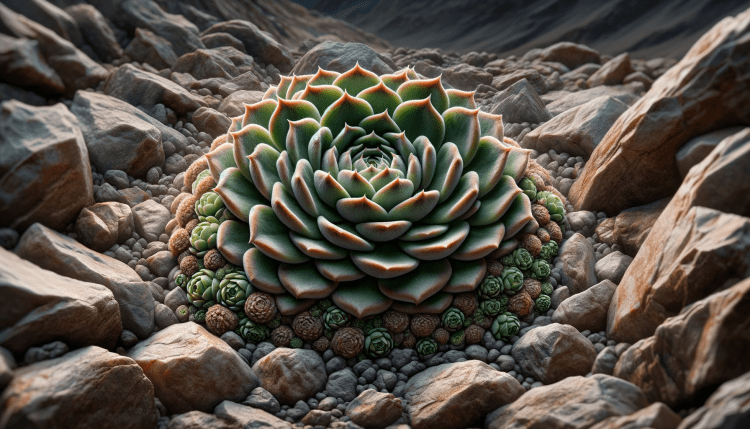
Quick Identification Guide for Succulents:
Appearance:
- Succulents are known for their thick, fleshy leaves or stems, which store water.
- They come in a variety of shapes, sizes, and colors, ranging from greens to purples and even pinks.
- Commonly have a rosette shape, but some can be columnar or trailing.
Common Types:
- Echeveria: Rosette-forming with smooth, plump leaves.
- Sempervivum (Hens and Chicks): Tight rosettes that produce offsets (chicks).
- Aloe: Often spiky, with elongated leaves.
- Sedum: Includes both ground cover and upright varieties, known for their star-shaped flowers.
- Cacti: A distinct group within the succulent family, characterized by areoles (spots where spines, hair, leaves, flowers grow).
Plants Commonly Confused With:
- Agave: Similar to aloe with rosette formation but larger and with fibrous leaves; generally not considered a succulent.
- Haworthia: Resembles small aloes, but generally smaller with more pronounced leaf patterns.
- Yucca: Can be mistaken for agave or aloe; has tougher, more fibrous leaves.
Habitat:
- Naturally found in arid and semi-arid regions around the world, particularly in Africa, the Americas, and parts of Europe and Asia.
- In their natural environment, succulents are adapted to survive in harsh conditions with infrequent rainfall.
Cultivation:
- Widely cultivated as houseplants or garden plants due to their low maintenance and diverse forms.
- Prefer well-draining soil and do not tolerate prolonged dampness.
Succulents are popular for their ease of care and diverse forms, making them a favorite among both beginner and experienced gardeners. Their unique water-storing abilities allow them to thrive in environments where other plants might struggle, such as rocky, sandy, or nutrient-poor soils.

Quick Facts About Succulents:
Definition: Succulents are a group of plants with thick, fleshy parts adapted to store water. They are not a distinct botanical family but are found across several plant families.
Diversity: Includes a wide range of species and genera, such as Aloe, Echeveria, Sedum, Sempervivum, and various cacti.
Appearance: Known for their thick, fleshy leaves or stems. They come in various shapes, sizes, and colors, and some produce flowers.
Natural Habitat:
- Commonly found in arid, semi-arid, and dry mountainous regions.
- Global distribution, with a high concentration in Africa, the Americas, and parts of Europe and Asia.
Water Storage: Adapted to survive in environments with infrequent rainfall; store water in their leaves, stems, or roots.
Soil and Watering: Prefer well-draining soil. Overwatering is a common issue in cultivation, as their water-storing adaptations make them susceptible to rot in consistently wet soil.
Sunlight: Generally require plenty of sunlight, but some varieties need shade or indirect light.
Uses:
- Popular as indoor and outdoor ornamental plants due to their unique appearance and low maintenance.
- Some species have medicinal uses, like Aloe vera.
Propagation: Easily propagated from leaf cuttings, offsets, or seeds.
Environmental Benefits: Often used in xeriscaping, a landscaping method that reduces or eliminates the need for supplemental water from irrigation.
Cultivation: Widely cultivated and hybridized, leading to a vast array of ornamental varieties.
Succulents are valued for their unique and diverse appearances as well as their ability to thrive in challenging growing conditions. They are particularly popular among gardeners and plant enthusiasts who appreciate their low-maintenance requirements and striking forms.




